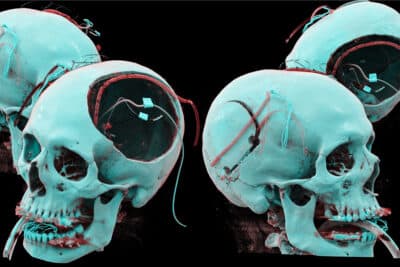With an overrepresentation of women aged 25 to 45, up to a third of global population may experience pain and tension in the chewing muscles and at the jaw area – some of the more typical symptoms of temporomandibular disorders (TMD). The extreme overload of chewing muscles, which is the result of excessive teeth grinding, clenching, called bruxism, tends to occur during situations requiring focus and/or physical effort and repetitive activities. But stress and psychosocial factors also play a role, in fact, they are often the main cause of the problem.
In line with that, dentists have been steering away from therapies with a sole focus on teeth and occlusion.
“Splint therapy and braces used to be the first line of defense against bruxism. But this turned out to be the wrong approach as people with proper occlusion also experience these problems”, says Peter Schmidt, Head of the TMD team at the Department of Prosthodontics at Semmelweis University.
People who come to the clinic expect us to deal with their problems on a dental level. In most cases, this will not happen as the problem itself is not caused by the teeth
, says Szilvia Ambrus, dentist and psychotherapist at the Department of Prosthodontics of Semmelweis University. “In medicine today, we cannot separate the body from the mind. During stressful times, we see our patients’ symptoms aggravate”, she adds.
For a proper diagnosis, patients go through a series of exams that focus on all potential aspects in accordance with international recommendations. These include a regular dental checkup, examinations of the joint and of the muscles (manual, medical imaging, motion analysis) and a detailed psychological test.
Since comorbidities can manifest in body parts other than the face, patients get asked about any acute and chronic pain they may have, sleeping and digestive disorders, problems with breathing, signs of anxiety, depression, etc. They also report on their mental state, how they deal with their symptoms and how they see themselves.
Less explicitly than biological and psychological factors, social background, too, impacts the condition of patients.
“Pain and the way we deal with it is a learnt behavioral pattern that depends on a set of social circumstances. How someone living with chronic pain is perceived by society has a huge bearing on their life and can lead to anxiety, depression or even (self-) exclusion”, Ambrus explains.
To prevent further psychological damage, it is vital that TMD patients are thoroughly informed of their condition.
Lack of information leads to further anxiety especially since, with the symptoms of TMD being so varied, getting a proper diagnosis can sometimes take years.
Growing anxiety causes the muscles to become even more tense, which can make an otherwise simple problem more severe.
Untreated symptoms can also lead to (more) psychological problems, increasing depression and anxiety.
TMD is already more prevalent among perfectionists, over-achievers, people who tend to ruminate and suppress their problems; all of which can manifest in teeth clenching.
If necessary, the TMD team refers the patient to a therapy best tailored to their needs. This can range from self-help books to mindfulness training to short-term cognitive behavioral therapy or long-term psychotherapy with a psychologist. “All these help patients channel their problems more effectively”, Ambrus adds.
Physiotherapy is another key component of the treatment as it addresses both physiological and psychological problems.
Special TMD exercises alleviate pain and improve the joint function. As a result, quality of life improves
, says Bernadett Molnár, physiotherapist and co-creator of the physiotherapy curriculum for TMD disorders at Semmelweis University.
Getting rid of these bad habits takes time.
Once patients become aware of their unconscious patterns, they can start replacing them with other, harmless distractions.
Some of the examples include putting sticky notes to places where they spend a lot of time with messages like ‘Relax’, or setting phone reminders to remind themselves to get up from the desk and stretch. “In a resting position, the upper and the lower teeth do not touch. So when someone clenches their teeth while texting, we advise that they place the tip of the tongue on the roof of the mouth”, Molnár says.
Physiotherapy is also a tool people can use to give themselves a sense of control over their condition and as such, mental support
, she notes. (see the video with at-home exercises attached)
Despite TMD having been more prevalent among (young) adults, experts currently see a surge among children and young teens.
Photo: Bálint Barta, Bettina Gál – Semmelweis Egyetem
Video: Tamara Bartincki, Gergely Fodor-Nagy, Bettina Gál, Nándor Grőger, Eszter Kovács, Attila Kucsa, Máté Lefler, Zétény Varga, Zsófia Végh, Anita Zsemlye. Reviewed by: Bernadett Alexa Molnár, physiotherapist, jaw specialist


